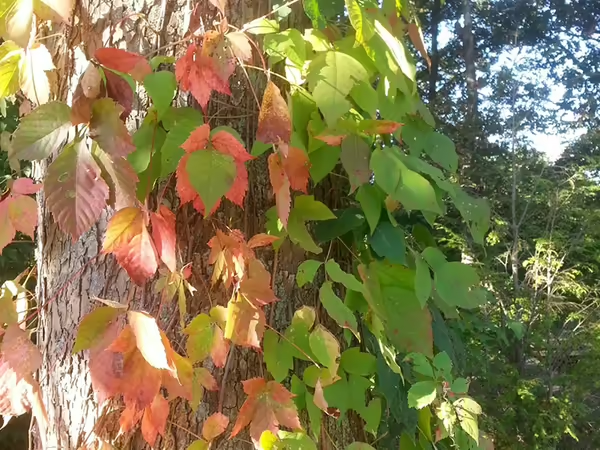
URBANA, Ill. — Experienced gardeners know where poison ivy is likely to be in the home landscape and newer gardeners will likely learn fast. Without knowing poison ivy is in the yard, it is all too easy to get the oils on your hands and clothing while clearing beds of otherwise harmless weeds says Richard Hentschel, University of Illinois Extension Horticulture educator.
“Until you can easily identify poison ivy, the adage of ‘leaves of three let it be’ are pretty good words to live by,” Hentschel says.
All parts of poison ivy have oil that gives us dermatitis; watery blisters are common. You can get poison ivy even in the winter when plants and vines are dormant. Thoroughly wash your skin with soap and water immediately after encountering the plant.
In the home landscape, it is best to remove poison ivy while it is small and before it begins to vine. Never burn poison ivy as the oils will be in the smoke. Young seedlings will die if pulled out and left to dry, handling them as little as possible.
“Use a digger of your choice, so you do not come in contact with the plants and consider wearing an unlined rubber glove,” Hentschel says.
As a small seedling, poison ivy looks like many other immature weeds, not quickly recognizable. As it continues to grow, poison ivy will grow its characteristic three leaflets comprising a compound leaf and take on vining growth habit. As a vine, it can easily hide in a bed of ground covers, reaching out into the lawn from the edge of the woods, climbing up the house wall with the Boston ivy or other ornamental vines. Gardeners will also find it while pruning their shrubs.
“Poison ivy has outstanding reds and oranges for fall color and is quite attractive,” Hentschel says. “Look, but don’t touch.”
With slightly bigger plants, gardeners could use a glyphosate pesticide product, but apply it carefully around valuable ornamentals.
When the poison ivy vine runs into a tree trunk, the vine develops brown aerial roots that can cling to the bark. Vines growing up the tree can be as small as a quarter of an inch to over 3 inches in diameter for a larger mature vine. In this third form and its mature stage as a tree-climbing vine poison ivy leaves can be 2 feet in size. This is where the vine begins to flower and fruit annually. Its berries are eaten by wildlife and later deposited along fence rows, beneath deciduous and evergreen tree canopies, and shrub borders.
If you find yourself with a tree vine, the best control option is to carefully cut through the vine at the soil line. Leave the vine to dry in the tree.
For more information about managing poison ivy or other horticulture topics, connect with your local Illinois Extension county office at go.illinois.edu/ExtensionOffice.
Photo by Richard Hentschel. In the fall, poison ivy turns an attractive red and orange as it vines up trees.
SOURCE: Richard Hentschel, retired Horticulture educator, University of Illinois Extension
PHOTO ACCESS: The photo in this article is available to download for media use.
Illinois Extension, the public outreach, and engagement arm of the University of Illinois, translates research-based knowledge into actionable insights and strategies that enable Illinois businesses, families, and community leaders to solve problems, adapt to changes and opportunities, make informed decisions, and carry technical advancements forward into practice.